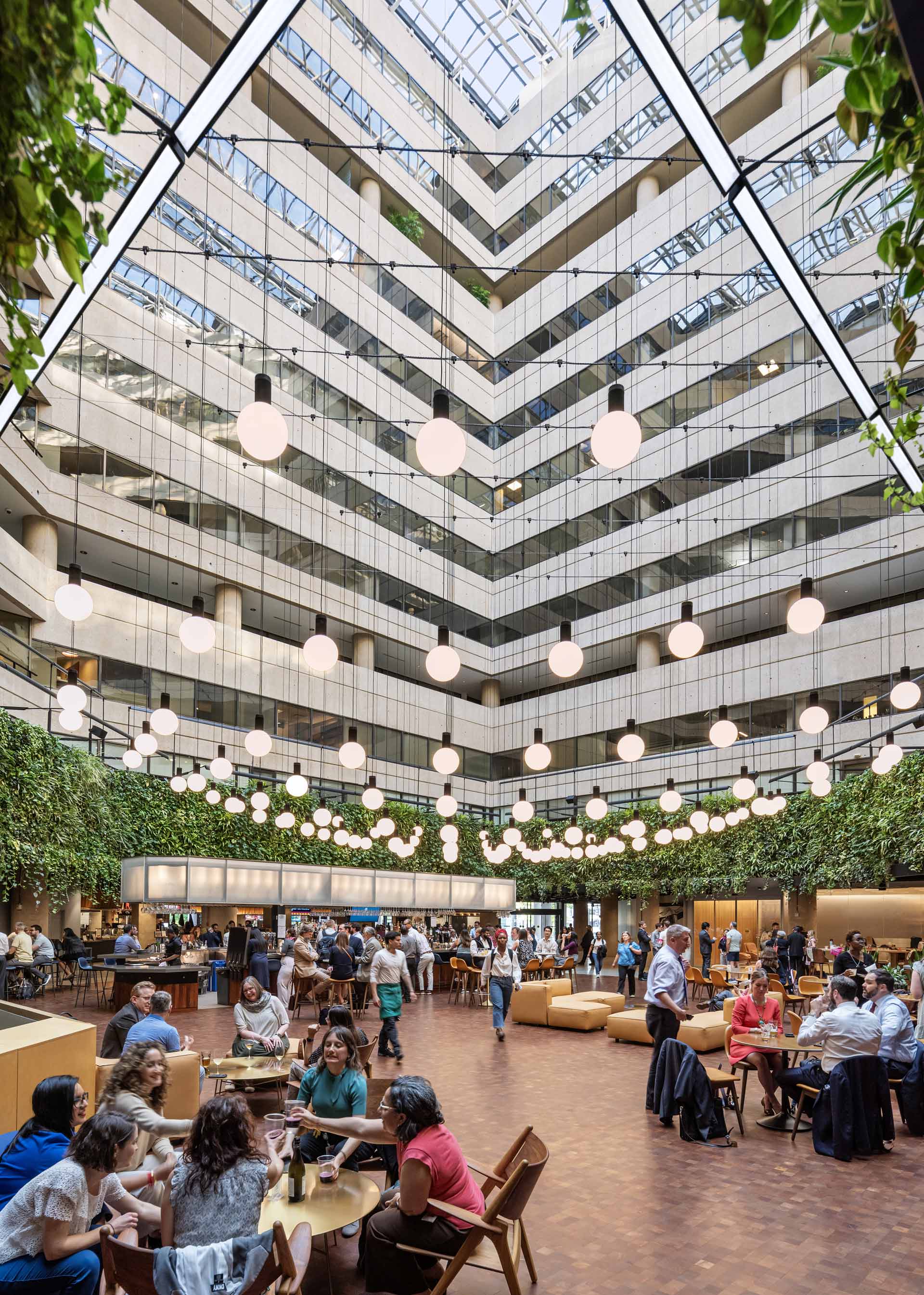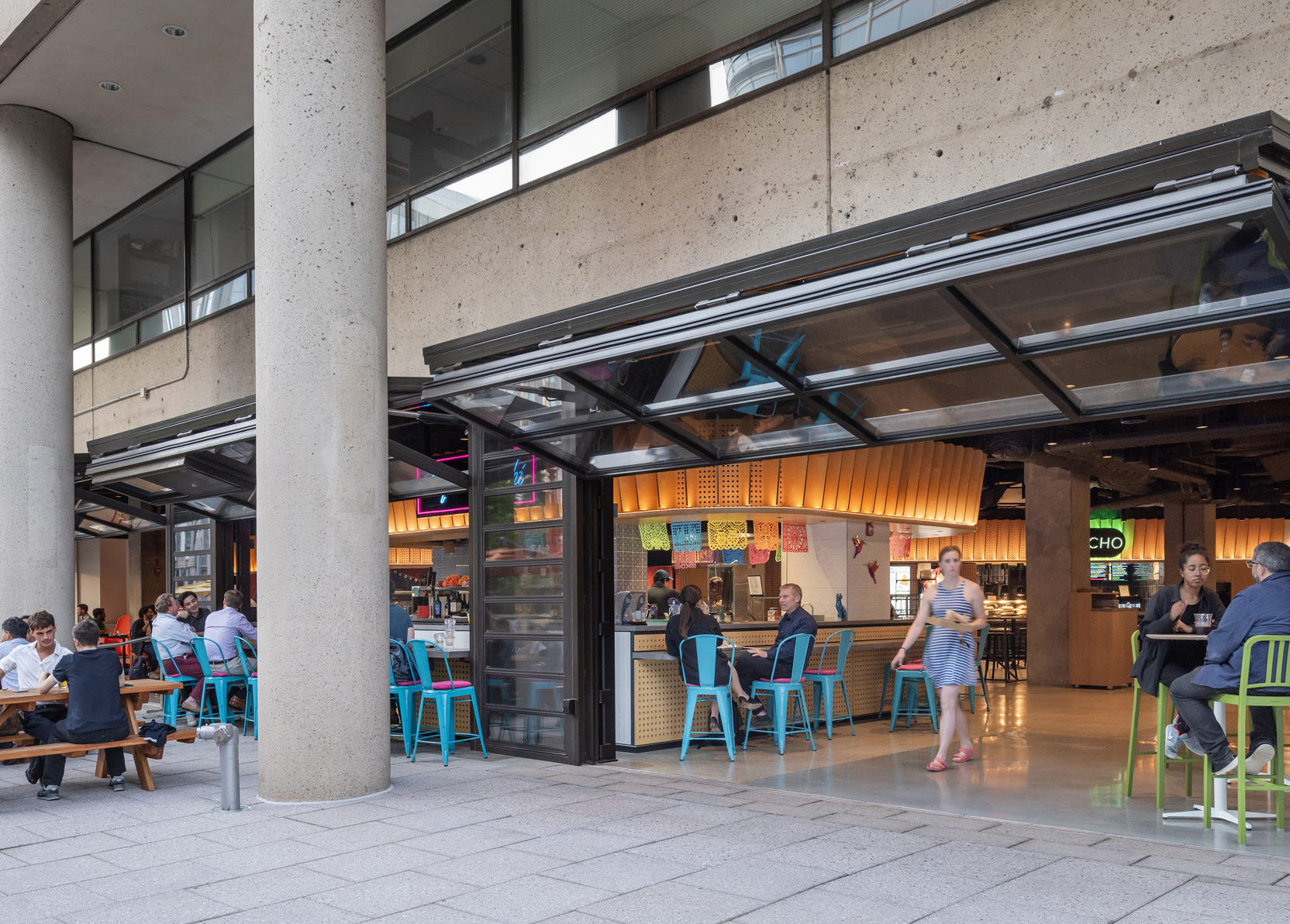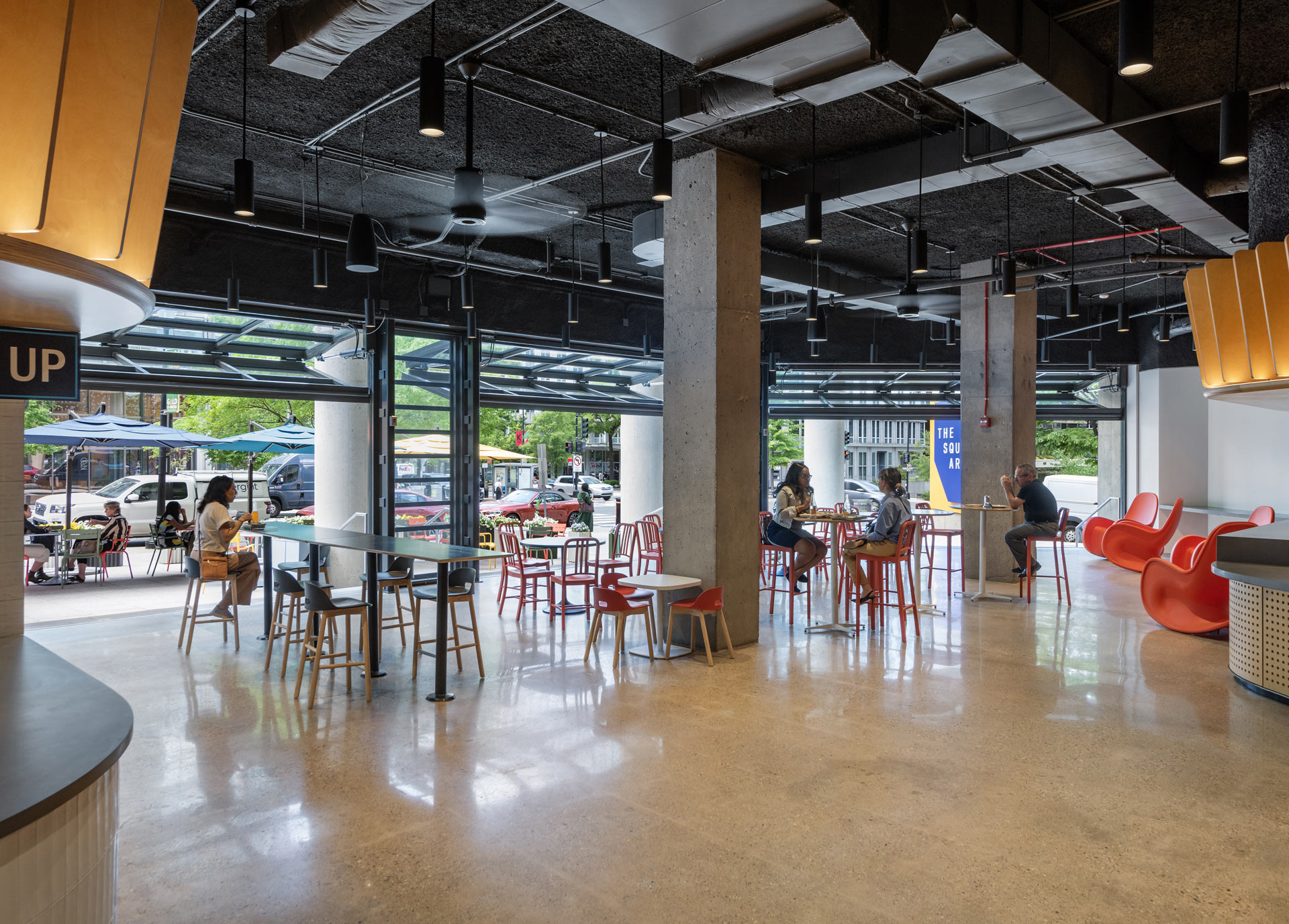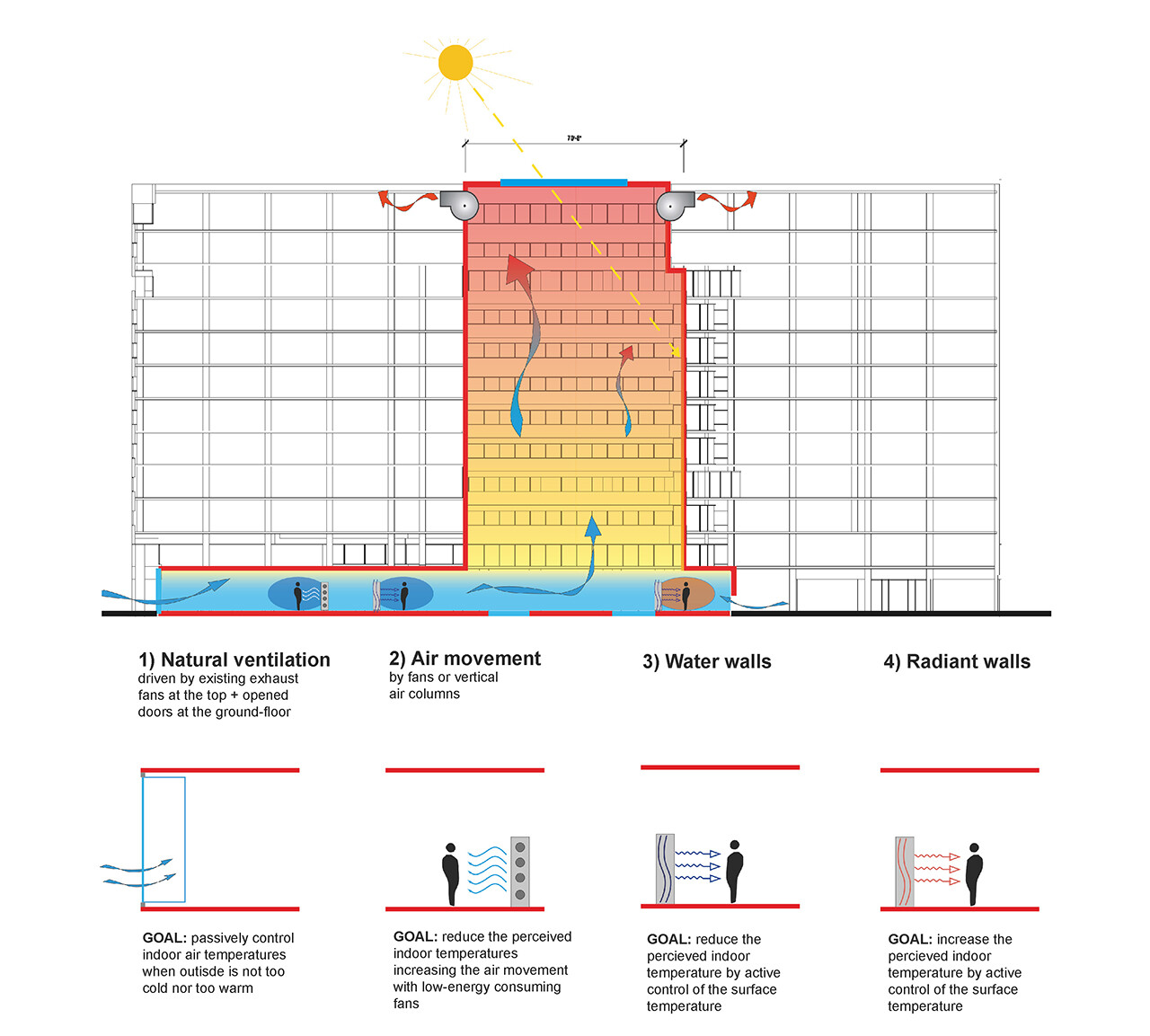International Square Food Hall, Washington, DC, USA

A naturally ventilated indoor food hall in Washington DC that is an extension of the outdoors. Together with the design team, Transsolar transformed the existing fully conditioned central lobby in Washington DC into a naturally ventilated indoor food market to recall the great outdoor markets found around the world, and bring renewed meaning to International Square. The vision was for the food court to feel like an extension of the outdoors, drawing visitors in from the sidewalk with no intervening doorways while still providing comfort for the users.
This approach targets passively controlling the indoor thermal comfort of the food court, as much as the D.C. climate allows. Using the exhaust fans already installed for smoke evacuation, outside air is directly drawn into the market hall assisting natural ventilation.
The exhaust fans on top of the atrium draw cooler outside air through the open doors at the ground floor to cool the space. Using the central atrium as an exhaust chimney for fan-assisted natural ventilation minimizes the operation of the mechanical ventilation system. This results in energy and operational cost savings compared to a permanently enclosed space.
The operable vents at the top of the atrium, sized and designed to minimize pressure drops, can lead to periods of the year where natural ventilation can occur even without the support of the exhaust fans and further decrease energy, operation costs and the resiliency of the entire system.
Starting from late winter until early summer, the mechanical systems serving the food court can be switched off and the space can be left floating in an extended comfort range set in between 65°F and 82°F. Ceiling fans can provide an evenly distributed air movement around the visitors, so that high thermal comfort is achieved also during the warm and humid peak hours. This out-of-the ordinary way of providing thermal comfort has been validated by other built similar built projects and is also in accordance with ASHRAE-55 adaptive comfort model.



